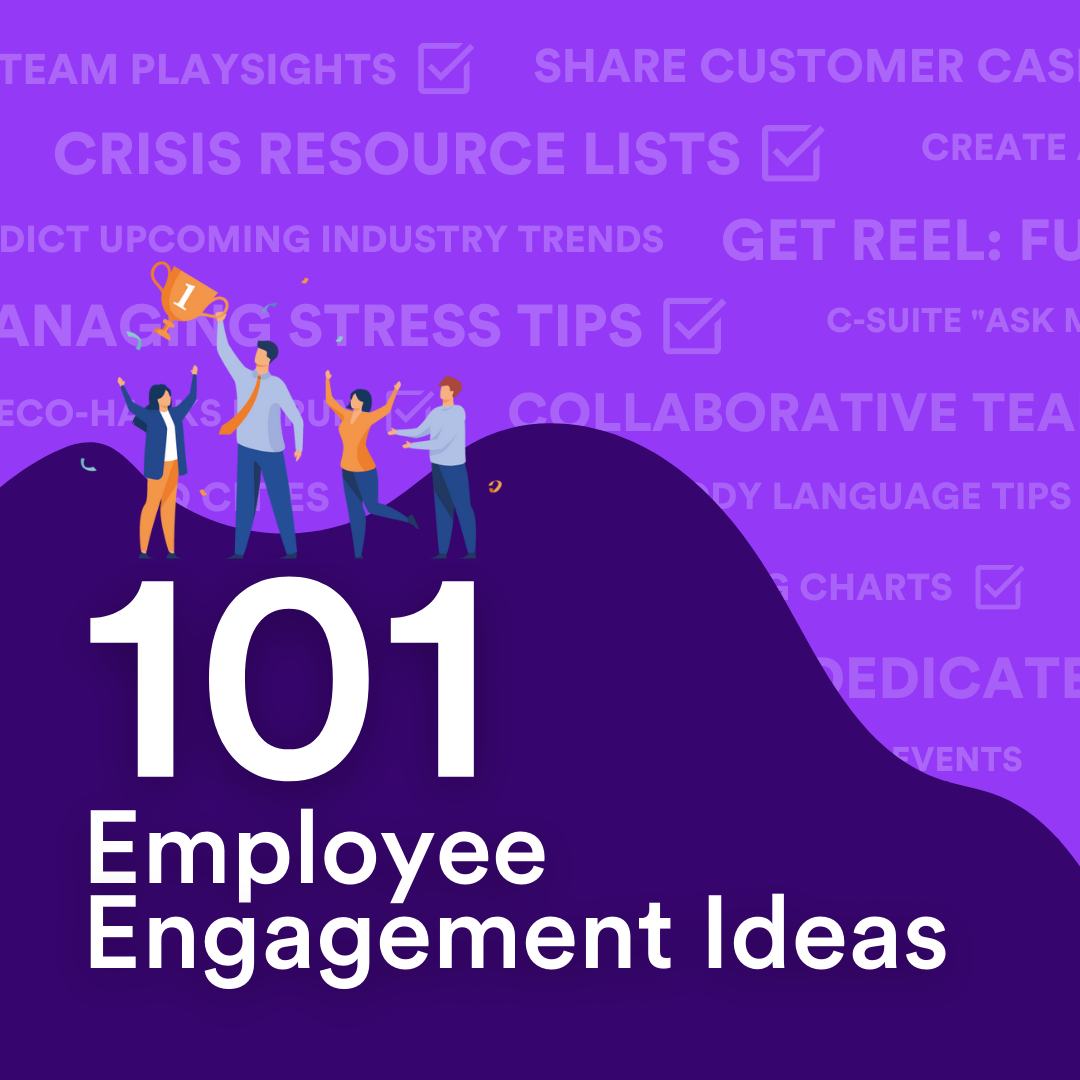Studies suggest that we favor those we spend the most time with. With workplaces changing rapidly, this preference for physicality may cause anxiety for remote and hybrid workers who don’t wish to return to the office full-time. Good workplace communication can help to level the playing field for all.
Throughout 2020 and 2021, offices and other work locations have been opening and closing faster than a nosy neighbor’s curtains. This is largely the result of the tension between public health, governmental regulations, the needs of employers, and the protection of employees. Whatever the origins though, the constant back and forth has crystallized the debate between people who want to return to the office and those who’d rather not.
For mainly remote employees, lockdowns and forced working from home have shown that it is possible to be in a self-determined location and be just as productive. On the other hand, plenty of workers miss daily in-person connection and hope for a speedy return to pre-pandemic norms.
Keep internal comms fresh with 101 Employee Engagement Ideas
Because this mass exodus from the office is a relatively new phenomenon, organizations and employees are only now starting to understand all of the effects. One of the increasingly important ones is the sense that this differential access to (and desire for) in-person working will create favoritism for those who return full-time.
Why? Proximity bias.
What is proximity bias?

In Darren Hardy’s book The Compound Effect, Hardy points to research showing that the people we associate with most frequently can determine as much as 95% of our success or failure. In Jim Rohn’s even more widely known phrase, “you are the average of the five people you spend the most time with.”
For most people, our circles of close associates are pretty small, but have a huge impact on our lives. Whether it’s at home, with friends, or at work, we spend our time with people we like and respect. Given the tightness of these networks, it’s unsurprising that we value and reward those we encounter most frequently (and physically).
The worry for some hybrid and remote workers is that in their absence from work locations, those who do attend more frequently will have closer physical access to leaders. When they form small cliques of power and influence, leaders can come to rely on in-person workers more strongly and will reward them to the exclusion of others.
Proximity bias is the unconscious tendency to give preference to those in our immediate physical circle.
It pays to sit near the boss

Have you ever wondered whether sitting near the boss – or in a prominent position in meetings – is worthwhile? Turns out that it really can be. Research done by the Rotterdam School of Management and Cambridge University showed that physical closeness between managers and their employees leads directly to similarities in behavior and outlook.
This isn’t always positive, however, because if the leader is unethical then the employees are more likely to mirror that. The studies showed that increasing distance between boss and worker introduced a greater diversity of opinion and a loosening of influence.
Aside from the ethical questions though, what the studies proved is that physicality leads to more tightly bonded circles of influence. So, if you want to get ahead, get a chair near the front.
There’s lots more insights in this video from the Rotterdam School of Management.
Is hybrid work the solution to proximity bias?
With an uneven split of people either returning or not returning to the workplace, how can we ensure physical favoritism doesn’t take hold?
The hybrid work model has been touted as a possible answer to this dilemma. Many high-profile enterprises, including Apple, Microsoft, and Slack are all now offering hybrid working arrangements for their knowledge workers, so it’s clearly a model scalable for big organizations.
Hybrid workplaces also have the backing of plenty of employees who see value in the flexible model. In McKinsey’s study from 2021, “nearly three-quarters of around 5,000 employees McKinsey queried globally would like to work from home for two or more days per week, and more than half want at least three days of remote work.” In another recent survey by Envoy and Wakefield Research, “47% of employees would likely look for another job if their employer doesn’t offer a hybrid work model.”
Keep internal comms fresh with 101 Employee Engagement Ideas
If a significant enough number of enterprises opted for similar arrangements then there could be a natural sea change, with the market shifting entirely toward flexibility.
But hybrid working is clearly not for every organization. Morgan Stanley and Goldman Sachs are just two of the major firms to take an entirely different line on the future of work. In February 2021, the CEO of Goldman Sachs suggested that remote work is not “a new normal,” rather, “an aberration that we are going to correct as quickly as possible.”
And it’s not just the biggest enterprises who remain skeptical of the hybrid work blend. The same call to return to offices has also come from smaller businesses where on-location presence remains either necessary or required by senior leaders.
In one well-publicized spat, some workers at the Washingtonian magazine walked out when their chief executive Cathy Merrill published an article that appeared to threaten employees’ job security if they insisted on hybrid arrangements. In her op-ed, Merrill wrote, “Remember something every manager knows: The hardest people to let go are the ones you know.”
To some the inference seems to have been that if you don’t return to the office, you’ll become less well known and valued and ultimately easier to lose. This is proximity bias at work.
Effective workplace communication may be a mediation

To make workplace communication effective, we need to ensure that everyone feels like they matter regardless of where they’re working. There are numerous ways to do that:
1. Use technology to ensure everyone has presence equity
Presence equity is a term that was used at the MIT Review and Harvard Business Review EmTech Next conference in 2021. Put simply, presence equity is the idea that every team member, regardless of whether they’re in the boardroom, on a Zoom screen, or the end of a phone line, is given equal space and priority. If companies are serious about inclusivity then they need to guarantee this in principle and then set up their technologies and work processes to make it happen.
In an article for CMSWire, Tim Kulp set out his vision for a presence-fulfilling smart office. Kulp suggests tips to upgrade communications systems:
- Think remote first – By considering how remote workers experience and are represented in meeting rooms you are better placed to install systems that will include everyone. This will include high tech audio microphones and video screens which can guard against grainy laptop images and whispered asides. One way to represent remote employees is to have them broadcast on larger screens within the room.
- Consider room layout – Kulp gives the example of whiteboards as a potential point of friction. Whiteboards may be hard to see on camera because the glare or distance may be off-putting to remote workers who end up not contributing because they don’t want to interrupt. Organizations should consider what kind of collaborative technologies (such as digital whiteboards) they use in these situations and what the workflow follow-up is when only some folks can check back and see those notes in person.
Keep internal comms fresh with 101 Employee Engagement Ideas
2. Commitment from leaders
Yes, senior leaders are busy and many of them won’t want to spend time in meetings fiddling around with microphones so that everyone can hear equally, but creating a workplace with outstanding employee experience takes effort.
Creating a change so that every employee is seen and present isn’t going to come just from employees. Change and the investment of resources has to come from the top too.
If you set out the business case for why everyone needs to be viewed equally – and it isn’t hard to understand the value of creating a fully appreciated workforce – you may also shape how your organization needs to change. Asking senior leaders to champion meetings which intentionally involve everyone can improve credibility and ensure widespread adoption.
If All Hands meetings are a part of your regular workplace communication roster then think about how everyone is celebrated and given equal time. It’s easy to focus on the majority when you have a group of people, but this can make it even easier for others to feel excluded.
3. Set out standards and expectations
The language of inclusivity is more common in organizations now than it was even a few years ago. Employees are used to upholding certain standards, especially when they understand the why. So, in a similar way to DE&I strategies, be transparent in your communications and get everyone to understand that creating a cohesive work culture depends on a new kind of standard too.
This can be as simple as providing suggestions for how managers and meeting organizers can include everyone and giving technical guidance that will make meetings work better. Setting out standards and keeping them in an accessible content library can go a long way to embedding new behaviors.
4. Actively promote changes
If you make changes to how your organization runs, but don’t actively publicize them, they won’t take hold. Workplace communication is built on timeliness and repetition of key messages, so if you do institute changes to accommodate remote and hybrid workers, make sure they are also at the heart of your internal communications campaigns.
A recent example from here at Interact was the day of activities we ran for World Mental Health Day. Although we had numerous office-based activities across our UK and US locations, including healthy food and yoga classes, it was always clear that this event was for everyone. Sending out meal vouchers, posting gift bags, and making all on-site events accessible via video was a way of showing how much we value all our colleagues, regardless of their location.
One of the most appreciated events from the day was the simple act of giving each employee more virtual recognition ‘points’ so that they could award them to colleagues. Allocating more points than they would usually have ensured that individuals felt they could reach further than their immediate teams and reward colleagues who may be important but not a daily part of their lives. Seeing the tide of good feeling this fostered on the social intranet timeline was a treat.
Preparing for the future

If the data is correct, most employees don’t want to return to offices full-time. Whether or not organizations will allow this at a strategic level depends on their own circumstances, but it seems clear that for many companies an element of hybrid working will be part of the new normal.
This is a big change, which will have consequences both seen and unseen right now. As part of the adjustment to this new way of working though, it may be prudent to anticipate the psychological effects that proximity bias can have and to use workplace communication to mitigate challenges to company culture and employee wellbeing.


